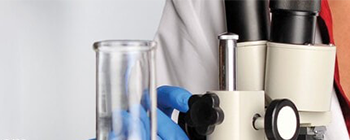Learn More
CD274 (PD-L1, B7-H1) Monoclonal Antibody (1-111A), eBioscience™, Invitrogen™
Rat Monoclonal Antibody
Supplier: Thermo Fisher Scientific 14997181
Description
Description: The 1-111A monoclonal antibody reacts with mouse B7-H1, also known as PD-L1. B7-H1, a member of the B7 family, has a predicted molecular weight of approximately 40 kDa and belongs to the Ig superfamily. B7-H1 is expressed on a majority of leukocytes including T, B, NK and DC. B7-H1 is a ligand for PD-1. Interaction of PD-1 with either PD-L1 (B7-H1) or PD-L2 (B7-DC) results in inhibition of T and B cell responses. Preliminary testing suggests that 1-111A and MIH5 (Cat. No. 14-5982) cross-block each other. Applications Reported: The 1-111A antibody has been reported for use in flow cytometric analysis. Applications Tested: The 1-111A antibody has been tested by flow cytometric analysis of mouse splenocytes. This can be used at less than or equal to 0.5 μg per test. A test is defined as the amount (μg) of antibody that will stain a cell sample in a final volume of 100 μL. Cell number should be determined empirically but can range from 10^5 to 10^8 cells/test. It is recommended that the antibody be carefully titrated for optimal performance in the assay of interest. Purity: Greater than 90%, as determined by SDS-PAGE. Aggregation: Less than 10%, as determined by HPLC. Filtration: 0.2 μm post-manufacturing filtered.
Programmed death receptor ligand 1 (PD-L1, also called B7-H1) is a recently described B7 family member. To date, one specific receptor has been identified that can be ligated by PD-L1. This receptor, programmed death receptor 1 (PD-1), has been shown to negatively regulate T-cell receptor (TCR) signaling. Upon ligating its receptor, PD-L1 has been reported to decrease TCR-mediated proliferation and cytokine production. PD-L1 expression was found to be abundant on many murine and human cancers and could be further up-regulated upon IFN-gamma stimulation. Thus, PD-L1 might play an important role in tumor immune evasion.Specifications
| CD274 (PD-L1, B7-H1) | |
| Monoclonal | |
| 0.5 mg/mL | |
| PBS with 0.09% sodium azide; pH 7.2 | |
| Q9EP73 | |
| Cd274 | |
| Affinity chromatography | |
| RUO | |
| 60533 | |
| 4° C | |
| Liquid |
| Flow Cytometry | |
| 1-111A | |
| Unconjugated | |
| Cd274 | |
| B7-H, B7H1, PD-L1, PDCD1L1, PDCD1LG1, PDL1, B7 homolog 1, CD274 antigen, PDCD1 ligand 1, programmed cell death 1 ligand 1, programmed death ligand 1 | |
| Rat | |
| 50 μg | |
| Primary | |
| Mouse | |
| Antibody | |
| IgG2a κ |
For Research Use Only.



-Flow-20170216130641.jpg-250.jpg)